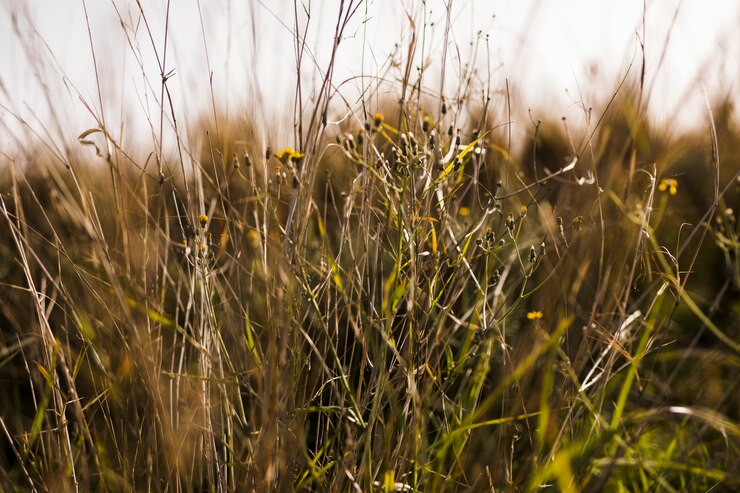Most farms that we work with have a mix of cropland and non-cropland acres. The non-cropland acres usually have features like creeks, wetlands, waterways, building sites, steep terrain, trees, or pasture which make those areas impractical to farm. A land category kind of in-between are the acres enrolled in CRP (Conservation Reserve Program). CRP acres are still considered cropland, but they are not planted to crops during the contract. These acres can be farmed again after the contract ends. Typically, CRP contracts run for 10 or 15 years. We get a lot of questions each year about the many aspects of CRP. This article will provide an overview of CRP and some thoughts on how to use it.
The CRP program is administered by the Farm Service Agency (FSA), a branch under the USDA. Landowners sign a contract agreeing to plant a specific seed mix in exchange for a yearly rental payment. The goal or public benefit of this program includes improving water quality, reducing soil erosion, and adding wildlife habitat. This is a voluntary program on private land; it’s very popular on marginal farmland and sensitive areas especially near water or wetlands.
When CRP started in 1985, it was in part intended to reduce the surplus supply of the major crops during the farm crisis. The idea of the U.S. Government encouraging conservation acres with programs to control production goes back to the 1930’s when acreage allotments were used during the Great Depression. The Soil Bank program was created in the 1950’s during a time of large surplus. The use of these programs over the years rises and falls based on commodity prices and the overall farm economy. According to the USDA, the modern CRP program peaked in 2007 at 37 million acres. Currently there are 23 million acres enrolled in CRP nationally and about 1.7 million acres in Iowa.
There are several downsides to CRP to be aware of. The contract length of 10 to 15 years is a long time to lock up productive farmland. The rental rate may be attractive initially, but after 10 or more years it likely won’t be as competitive toward the end. Large tracts of CRP acres reduce local economic activity, considering all the dollars spent on inputs, equipment, and labor to grow a crop. Acres need to have “cropping history” to qualify for CRP, so you can’t enroll acres that are already not farmed. Weed control is a real challenge, especially with seed mixes containing wildflowers and forbs. It’s nearly impossible to eradicate a heavy patch of Canada thistle without killing all the non-grass species and reseeding it. Tree control is a big challenge also especially toward the end of a contract. A mid-contract management activity is required. The most common is a controlled burn, which is also a big challenge on some farms. The CRP is inspected by NRCS staff, and penalties may be assessed if a CRP stand fails to meet the requirements. The amount of paperwork and recordkeeping requirements for CRP contracts needs to be organized and dealt with in a timely manner.
There are too many CRP options and variations to list, and the program offerings change with each new farm bill. Here are the most common CRP contracts we use:
Buffer Strips / Filter Strips –These are one of my favorite uses of CRP because they are efficient and provide great benefit per acre in my view. A relatively narrow strip of prairie grass ranging from 20 feet to 120 feet wide is planted along a stream or water of some kind to filter soil sediments, chemicals, and fertilizer from water runoff before it enters the water body. It also helps reduce stream bank erosion and creates tremendous wildlife habitat.
Grass Waterways – CRP waterways are another very popular use of CRP. We use them for soil erosion control. Waterways are shaped channels of grass designed to collect rain runoff. There are many waterways not in CRP. When a farm needs a new waterway, it’s worth considering a CRP waterway. They are typically required to be larger and wider than an owner would choose on a private waterway, which is a negative in most situations. However, the CRP waterway generates a rental payment and cost share for the installation that you won’t get on a private waterway.
Wetland CRP – This is used on water prone “hydric soil” where flooding or ponding is likely to make farming difficult. Wetland CRP also improves water quality. By letting these designated wetland areas flood, the downstream flooding may be reduced. This also provides a great habitat for wildlife.
General CRP – This contract is a little different from the others because it has a competitive bidding process, and its only open to sign-up at designated times. The landowner submits an offer with all the details of the land and intended plantings, which is then ranked based on the environmental benefits and costs. This type of CRP may be a good choice on rough or steep farmland with poor crop yields. The payments are lower with General CRP compared to the others.
The intent of the USDA for CRP or similar programs has shifted over the years, starting with crop surplus control, then primary soil protection, and more recently a variety of targeted wildlife and environmental benefits. For example, I remember most CRP from years ago was planted to brome grass only, which was easy to maintain, but it did not add much diversity for wildlife. More recent CRP acres are planted with much more complex seed mixes with an emphasis on plant species native to the area. They include tall grass prairie mixes for upland birds like pheasants or songbirds, wildflower mixes for pollinators like honeybees, and wetland mixes of grass and forbs specific to wetland environments. The future of CRP initiatives from the USDA will likely include a focus on climate change through carbon sequestration and reducing greenhouse gas emissions. It’s a good idea to keep up to date with the different CRP options.



